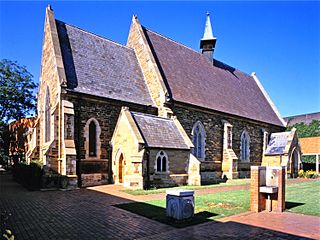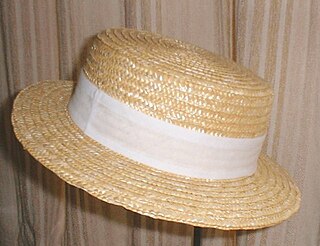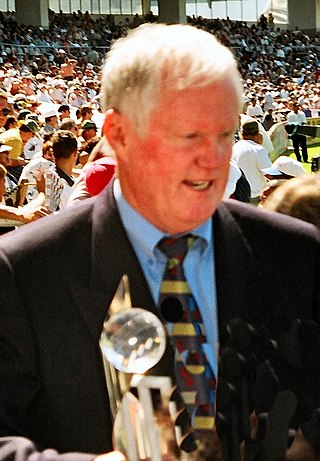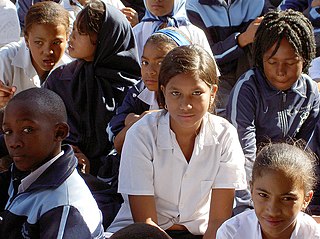
South African English is the set of English language dialects native to South Africans.

Durban is the third-most populous city in South Africa, after Johannesburg and Cape Town, and the largest city in the province of KwaZulu-Natal. Situated on the east coast of South Africa, on the Natal Bay of the Indian Ocean, Durban is largest port city in sub-saharan Africa and was formerly named Port Natal. North of the harbour and city centre lies the mouth of the Umgeni River; the flat city centre rises to the hills of the Berea on the west; and to the south, running along the coast, is the Bluff. Durban is the seat of the larger eThekwini Metropolitan Municipality, which spans an area of 2,556 km2 (987 sq mi) and had a population of 4.2 million in 2022, making the metropolitan population one of Africa's largest on the Indian Ocean. Within the city limits, Durban's population was 595,061 in 2011. The city has a humid subtropical climate, with hot, wet summers and mild, dry winters.

Pietermaritzburg is the capital and second-largest city in the province of KwaZulu-Natal, South Africa after Durban. It was named in 1838 and is currently governed by the Msunduzi Local Municipality. The town was named in Zulu after King Dingane's royal homestead uMgungundlovu. Pietermaritzburg is popularly called Maritzburg in Afrikaans and is often informally abbreviated to PMB. It is a regionally important industrial hub, producing aluminium, timber and dairy products, as well as the main economic hub of uMgungundlovu District Municipality. The public sector is a major employer in the city due to local, district and provincial government offices located here.

A boater is a semi-formal summer hat for men, which was popularised in the late 19th century and early 20th century.
Seventh grade is the seventh year of formal or compulsory education. The seventh grade is typically the first, year of middle school. In the United States, kids in seventh grade are usually around 12–13 years old. Different terms and numbers are used in other parts of the world.

Fatima Meer was a South African writer, academic, screenwriter, and prominent anti-apartheid activist.

Robert Graeme Pollock is a former cricketer for South Africa, Transvaal and Eastern Province. A member of a famous cricketing family, Pollock is widely regarded as one of South Africa's greatest ever cricketers, and as one of the greatest batsmen in the history of cricket. Despite Pollock's international career being cut short at the age of 26 by the sporting boycott of South Africa, and all but one of his 23 Test matches being against England and Australia, the leading cricket nations of the day, he broke a number of records. His completed career Test match batting average of 60.97 remains the third best behind Sir Don Bradman and Adam Voges.
Inanda or eNanda is a township in KwaZulu-Natal, South Africa that is situated 21 km north-west of Durban. It forms part of eThekwini, the Greater Durban Metropolitan Municipality. Populated primarily by Zulu-speaking Black Africans, Inanda is the home of John Langalibalele Dube, first President of the African National Congress (ANC), a former residence and base of operations of Mahatma Gandhi, and the birthplace of the syncretic Nazareth Baptist Church

Westville Boys' High School, often referred to as WBHS or "boys high", is a semi-private high school for boys located in Westville, KwaZulu-Natal, South Africa.
Bishop Douglass Catholic School is a Roman Catholic co-educational secondary school and sixth form, situated in East Finchley area of the London Borough of Barnet, England. Its current Headmaster is Martin Tissot, a former pupil at the school.

Worcester is a town in the Western Cape, South Africa. It is the third-largest city in the Western Cape Province of South Africa. It is located 120 kilometres (75 mi) north-east of Cape Town on the N1 highway north to Johannesburg.
Springwood High School is a government-funded co-educational comprehensive secondary day school, located on Grose Road, Faulconbridge, in the Blue Mountains region of New South Wales, Australia.
St Stithians College is a private Methodist school situated in the suburb of Lyme Park in the border of Sandton and Randburg in the Gauteng province of South Africa. Founded in 1953 by Albert Collins, William Mountstephens and Gilbert Tucker, it has consistently ranked amongst the top performing independent schools in South Africa. It follows a co-ordinate educational model within a village of schools consisting of boys' and girls' colleges, boys' and girls' preparatory schools, and a junior preparatory. It is built on a 100 hectare estate, one of the largest school campuses in the country.

Education in South Africa is governed by two national departments, namely the Department of Basic Education (DBE), which is responsible for primary and secondary schools, and the Department of Higher Education and Training (DHET), which is responsible for tertiary education and vocational training. Prior to 2009, both departments were represented in a single Department of Education. Among sub-Saharan African countries, South Africa has one of the highest literacy rates. According to The World Factbook - Central Intelligence Agency as of 2019, 95% of the population aged from 15 and over can read and write in South Africa were respectively literate.

Hillcrest High School is a co-educational high school in Hillcrest, near Durban, in KwaZulu-Natal, South Africa.

The South African Railways Class GL 4-8-2+2-8-4 of 1929 was an articulated steam locomotive.

Indian South Africans are South Africans who descend from indentured labourers and free migrants who arrived from British India during the late 1800s and early 1900s. The majority live in and around the city of Durban, making it one of the largest ethnically Indian-populated cities outside of India.

Fairfield High School was a co-educational secondary school in Widnes, Cheshire.

School uniforms in England are worn in over 90% of primary and secondary schools in England. Parents are required to purchase the uniform which in 2015 averaged roughly £212.88 per child.
The following is a timeline of the history of the city of Durban in the eThekwini Metropolitan Municipality, KwaZulu-Natal province, South Africa.














